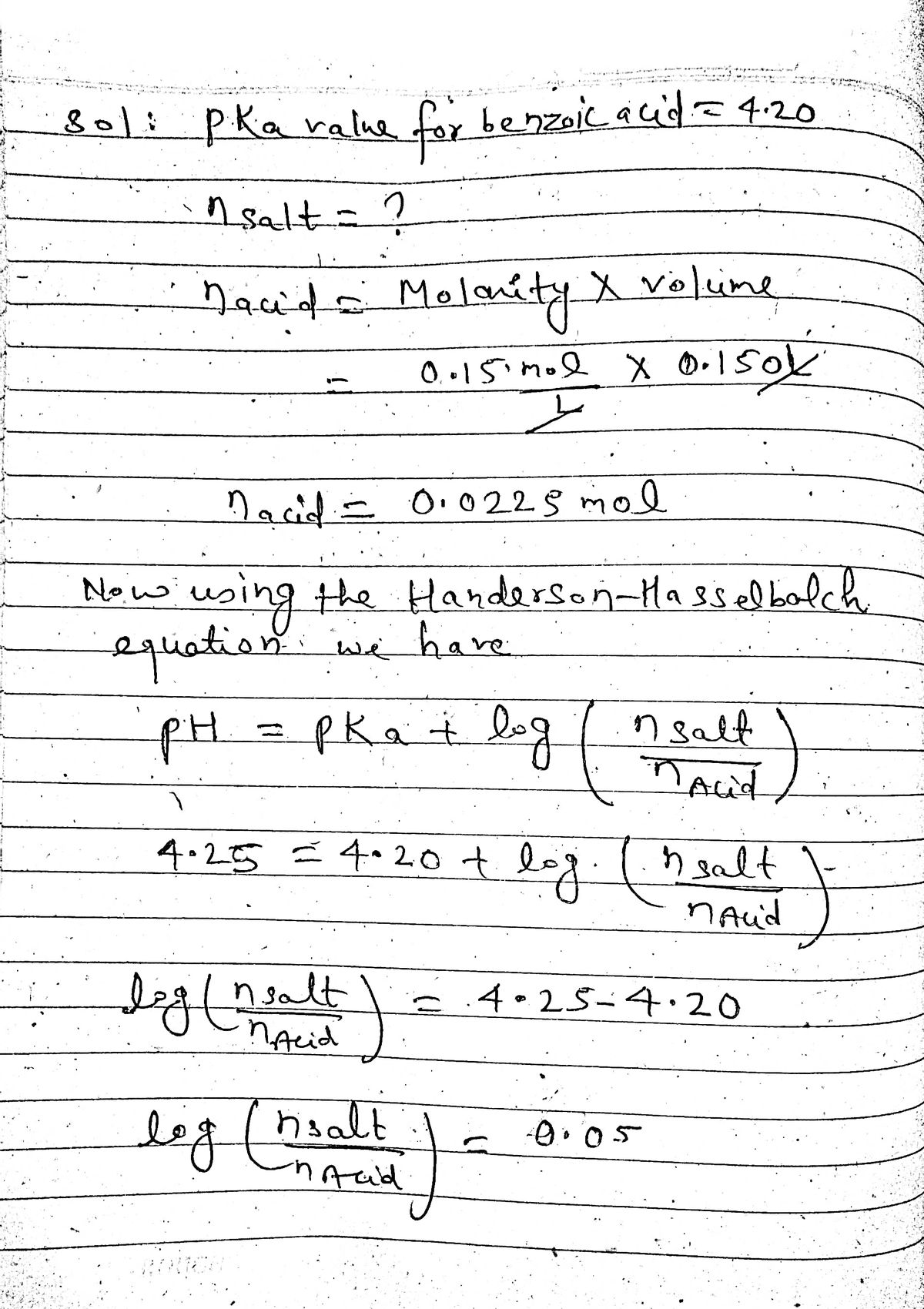Ionic Equilibrium
Chemical equilibrium and ionic equilibrium are two major concepts in chemistry. Ionic equilibrium deals with the equilibrium involved in an ionization process while chemical equilibrium deals with the equilibrium during a chemical change. Ionic equilibrium is established between the ions and unionized species in a system. Understanding the concept of ionic equilibrium is very important to answer the questions related to certain chemical reactions in chemistry.
Arrhenius Acid
Arrhenius acid act as a good electrolyte as it dissociates to its respective ions in the aqueous solutions. Keeping it similar to the general acid properties, Arrhenius acid also neutralizes bases and turns litmus paper into red.
Bronsted Lowry Base In Inorganic Chemistry
Bronsted-Lowry base in inorganic chemistry is any chemical substance that can accept a proton from the other chemical substance it is reacting with.
![**Question 8:**
What mass of sodium benzoate should you add to 1500 mL of a 0.15 M benzoic acid solution to obtain a buffer with a pH of 4.25?
---
This question involves preparing a buffer solution using sodium benzoate and benzoic acid. The challenge is to determine the appropriate mass of sodium benzoate needed to achieve the desired pH.
To approach this problem, consider the Henderson-Hasselbalch equation:
\[ \text{pH} = \text{pKa} + \log \left( \frac{[\text{A}^-]}{[\text{HA}]} \right) \]
Where:
- [A⁻] is the concentration of the base form (sodium benzoate).
- [HA] is the concentration of the acid form (benzoic acid).
Given:
- Volume = 1500 mL (1.5 L)
- Initial concentration of benzoic acid, [HA] = 0.15 M
- Desired pH = 4.25
The goal is to solve for the mass of sodium benzoate needed.
Note: The specific pKa value of benzoic acid is required to use the equation, typically around 4.2 for benzoic acid. Adjust calculations accordingly.](/v2/_next/image?url=https%3A%2F%2Fcontent.bartleby.com%2Fqna-images%2Fquestion%2F0d520b33-7440-45bc-bf50-9535ed2d03bc%2Fdbfb3e6e-c48e-4596-a16e-ed59a661e4b2%2Fmkorhqc_processed.jpeg&w=3840&q=75)

Step by step
Solved in 2 steps with 2 images









